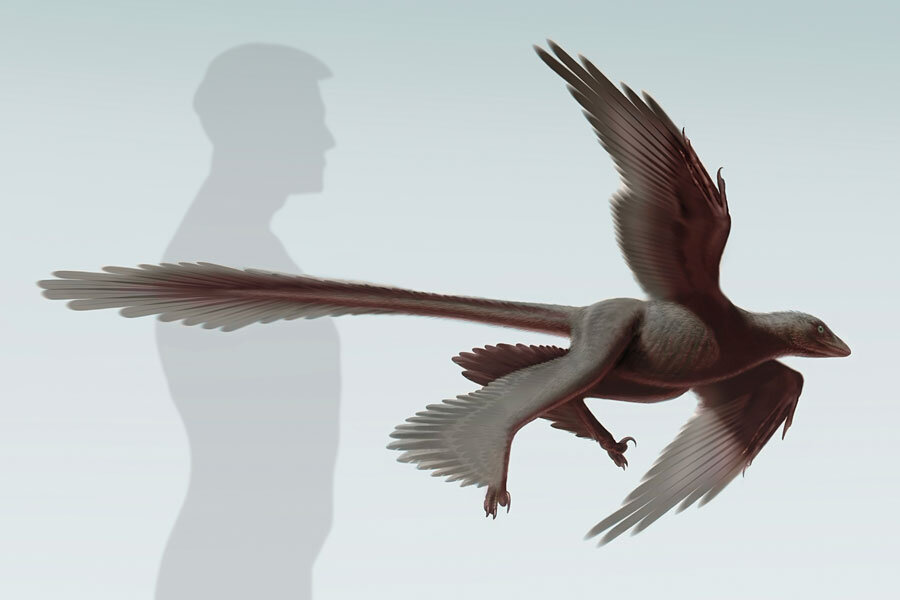Bizarre feathered dinosaur had four wings, probably couldn't fly well
Loading...
It was built sort of like a biplane but probably did not fly as well, if at all.
Scientists on Tuesday described a fossil of a strange dinosaur that lived in China 125 million years ago which was covered in feathers, looked like it had two sets of wings and may have been able to glide.
The meat-eating creature, called Changyuraptor yangi, had exceptionally long tail feathers, the longest feathers of any dinosaur, at one foot in length (30 cm). It had feather-covered forelimbs akin to wings as well as legs covered in feathers in a way that gave the appearance of a second set of wings.
Changyuraptor is not considered a bird but rather a very bird-like dinosaur. It illustrates that it is not always easy to tell what is and is not a bird. It measured a bit more than 4 feet long (1.3 meters) and weighed roughly 9 pounds (4 kg).
If a person saw Changyuraptor, the reaction likely would be: "Hey! That is a weird-looking bird," according to paleontologist Alan Turner of Stony Brook University in New York, one of the researchers.
"So, think a mid-sized turkey with a very long tail," Turner added.
Scientists have identified a handful of these 'four-winged' dinosaurs, known as microraptorines. Changyuraptor is the largest.
Birds arose from small, feathered dinosaurs. Crow-sized Archaeopteryx, which lived about 150 million years ago, is considered the earliest known bird. But many dinosaurs before and after that had feathers and other bird-like characteristics.
"Changyuraptor is very, very similar to Archaeopteryx and other primitive birds. So are many other dinosaurs like Anchiornis and Pedopenna. But they have some traits that birds lack, and lack some traits that birds have," Turner added.
Natural History Museum of Los Angeles County paleontologist Luis Chiappe, who led the study, said Changyuraptor lived in a forested environment in a temperate climate, hunting birds, mammals, small reptiles and fish.
"Animals like Changyuraptor were probably not engaged in powered flight like modern birds. However, Changyuraptor and dinosaurs like it could flap their wings and certainly had large feathered surfaces on both their forelimbs and hind limbs," Turner said.
"So this does raise the possibility they could glide or 'fly' in a primitive sort of way. The way I like to think of it is: if you pushed them out of a tree, they'd fall pretty slowly," Turner added.
If Changyuraptor were able to become airborne, its long tail feathers may have helped reduce descent speed and enabled safe landings. "This helps explain how animals like Changyuraptor could engage in some form of aerial locomotion - flight, gliding, and/or controlled descents - despite their size," Turner added.
In birds today, feathers can serve multiple functions beyond flight, including display, species recognition and mating rituals. Turner said Changyuraptor's feathers also may have served multiple purposes.
China has become a treasure trove for feathered dinosaur fossils. Changyuraptor was unearthed in Liaoning Province in northeastern China.
The study was published in the journal Nature Communications.







